Meetings and Events | News | Research Reports | Research in Progress |
Meetings and Events
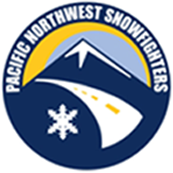 Pacific Northwest Snowfighters 2016 Conference
Pacific Northwest Snowfighters 2016 Conference
Pacific Northwest Snowfighters will host its 2016 conference in Portland, Oregon, June 7-8. The conference will feature multiple educational tracks with sessions on deicing agents, best management practices, and information technology. The exhibit hall will offer winter maintenance products, technology and equipment, and attendees will have the opportunity to try a snow plow training simulator. Details.
[divider]
 SIMA Snow & Ice Symposium
SIMA Snow & Ice Symposium
The Snow & Ice Management Association will host the 19th Annual Snow & Ice Symposium in Providence, Rhode Island, June 22-24. The symposium will feature more than 20 concurrent educational sessions, as well as in-depth workshops, keynote speeches, and networking events. The event will also include a two-day trade show. Details.
[divider]
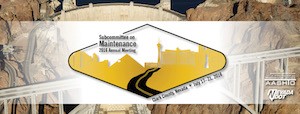 AASHTO Subcommittee on Maintenance Annual Meeting
AASHTO Subcommittee on Maintenance Annual Meeting
The American Association of State Highway and Transportation Officials Subcommittee on Maintenance will hold its annual meeting July 17-21 in Las Vegas. The meeting will include program updates, technical working group breakout sessions, and a general session on connected and autonomous vehicles in maintenance. AASHTO’s Snow and Ice Pooled Fund Cooperative Program will hold a pre-conference meeting July 16. Details.
News
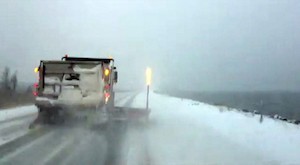 Michigan Implements New Wing Plow Lighting System
Michigan Implements New Wing Plow Lighting System
Michigan DOT has started using wing plows in the Upper Peninsula, but there were initially intersections, passing lanes and business entrances where they could not be used because of concerns about visibility to motorists. Workers at MDOT’s L’Anse Maintenance Facility recently developed an improved lighting system that extends and retracts with the wing plow blade to alert drivers. The “Superior Stick” has been implemented on all MDOT trucks with wing plows in MDOT’s Superior Region, with further implementation on state and county vehicles expected. Details.
[divider]
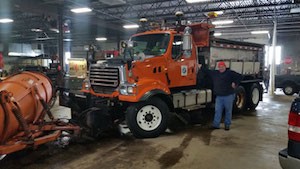 Minnesota Pilots Snowplow Driver-Assist System
Minnesota Pilots Snowplow Driver-Assist System
Minnesota DOT’s District 7 is piloting a snowplow driver-assist system that will help operators see road alignments and features in blowing snow and fog conditions that can reduce visibility to zero. The driver-assist system uses GPS technology and a front-mounted radar to provide the operator with an image of the road and any obstacles on it, and vibrate the operator’s seat if the plow gets too close to a roadway’s centerline or fog line. In one blizzard, the system was used to help safely clear a path so state troopers could rescue drivers from about fifteen stranded vehicles. The system was developed over 20 years through MnDOT-funded research projects. Details.
[divider]
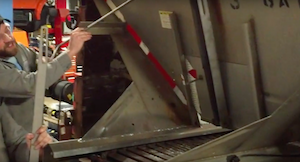 Salt-Door Stop Regulates Salt Flow
Salt-Door Stop Regulates Salt Flow
Mechanics at Michigan DOT’s Southwest Region have developed a plow truck salt-door stop to regulate salt flow. The stop is a stainless steel bar set to a calibrated height that maintains a constant flow rate to ultimately reduce salt use and save money. The Southwest Region has installed the $22 stops on its entire 80-truck fleet, and MDOT plans to install them statewide by next winter. Details.
[divider]
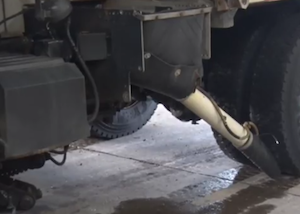 MDOT System Reduces Salt Scatter
MDOT System Reduces Salt Scatter
Michigan DOT’s L’Anse Maintenance Facility has developed a system that reduces salt bouncing and scattering by releasing it under the rear wheel of the plow. Facility staff report testing the system at 50 miles per hour with no deicer bounce or scatter. Prototypes of the system are in use on state and county roads. Details.
Research Reports
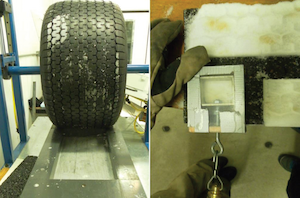 Understanding the Effectiveness of Non-Chloride Liquid Agricultural By-Products and Solid Complex Chloride/Mineral Products Used in Snow and Ice Control Operations
Understanding the Effectiveness of Non-Chloride Liquid Agricultural By-Products and Solid Complex Chloride/Mineral Products Used in Snow and Ice Control Operations
Clear Roads Project 13-02
Many new deicing and anti-icing agents based on agricultural by-products and complex chloride mineral blends have been introduced to the market in recent years. This project conducted several laboratory tests to assess the effectiveness of ten commercially available complex chloride mineral and agricultural products The agriculturally derived products reduced the freezing point of water better than salt brine, stayed on pavement longer than salt brine alone, and produced less corrosion. Report.
[divider]
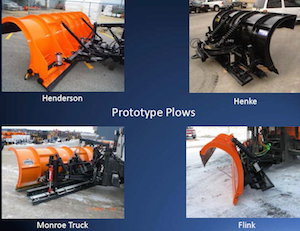 Using Mechanical Ice Breakers to Improve Snow and Ice Removal Operations
Using Mechanical Ice Breakers to Improve Snow and Ice Removal Operations
California DOT Report
Caltrans is aggressively pursuing a plan to reduce or eliminate the use of salt as a primary deicing agent and substitute environmentally safe methods of ice prevention and removal. This project assessed how mechanical icebreaker technologies, including penetrating drum attachments, multi-blade plow technology, special purpose ice-cutting blades, optimum ice-cutting blade angles, and underbody truck scraper attachments, could potentially evolve into ice removal or prevention tools. Specific technologies that are compatible with Caltrans’ current winter operations include segmented flexible blades and serrated expendable cutting edges. Report.
[divider]
 Implementation and Analysis of Snow Removal Wash Water Reuse Research
Implementation and Analysis of Snow Removal Wash Water Reuse Research
Ohio DOT Report 2016/3
In an effort to identify cost-effective, environmentally sustainable strategies to manage winter maintenance truck wash water, this project evaluated the feasibility of providing equipment and training to conduct wash water screening and evaluation to ODOT garages that do not have access to a sanitary sewer for wash water disposal. The garages measured total dissolved solids, pH, and turbidity of wash water samples during the 2014-15 winter season and followed previously developed classification models to classify it for reuse or disposal. The analysis supports off-site disposal for facilities without sewer access. Report.
[divider]
 Winter Maintenance Performance Measure
Winter Maintenance Performance Measure
Colorado DOT Report 2016-02
The Idaho Transportation Department’s Winter Performance Index combines data collected by road weather information systems about weather conditions, traffic mobility, and winter maintenance activities to evaluate the effectiveness of winter maintenance operations. This project implemented the Index in Colorado’s Region 4 in the 2014-15 winter season to evaluate its potential for use throughout the state. The test demonstrated that the Index provides enough information to understand both individual event performance and network-level details. Report.
[divider]
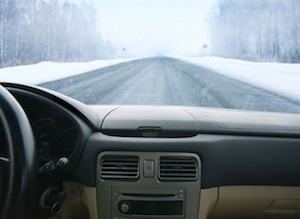 Use of Travel Time, Travel Time Reliability, and Winter Condition Index Information for Improved Operation of Rural Interstates
Use of Travel Time, Travel Time Reliability, and Winter Condition Index Information for Improved Operation of Rural Interstates
Mountain-Plains Consortium Report 15-295
This project developed a methodology for using travel times in rural areas calculated by intelligent transportation system methodology in Wyoming’s road and weather condition reporting system. Researchers compared travel times calculated by speed sensors with times calculated by Bluetooth sensors and created a travel time index for I-80 between Cheyenne and Laramie. They then modeled the travel time index based on weather data collected by RWIS stations and developed a methodology to implement and evaluate the travel time reporting procedure. Report.
[divider]
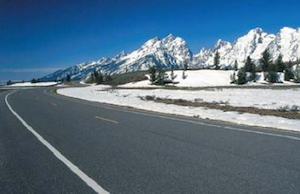 Snow Route Optimization
Snow Route Optimization
Colorado DOT Report 2016-01
This project examined winter service practices in Colorado’s Region 4 to provide recommendations to improve snow removal efficiency, and investigate whether routes can be reduced without compromising levels of service. Recommendations include a simplified level of service classification system, a review and potential implementation of anti-icing measures, route optimization, analysis of intersection plowing to eliminate windrows, cooperation between agencies so that routes can be optimized without concern for political boundaries, use of larger trucks that have greater material capacity, the use of a single system for mobile weather monitoring, minimizing unscheduled callouts and implementation of a driver warning system to alert drivers of snow removal work ahead. Report.
[divider]
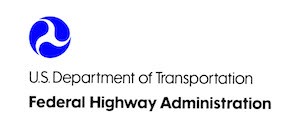 2015 Road Weather Management Performance Measures Survey, Analysis and Report
2015 Road Weather Management Performance Measures Survey, Analysis and Report
FHWA Publication FHWA-HOP-16-001
FHWA’s Road Weather Management Program established a set of performance measures as goals for helping state and local agencies improve performance of the transportation system during adverse weather conditions under the Safe, Accountable, Flexible, Efficient Transportation Equity Act: A Legacy for Users (SAFETEA-LU), and began collecting data to assess progress toward meeting those goals. This report updates previous assessments of the program released in 2009 and 2012. Based on a survey of states with responses from 40 DOTs, seven performance measures were added in 2015. Report.
Research In Progress
 Using Operational Data to Access Mobility and Crash Experience During Winter Weather Conditions
Using Operational Data to Access Mobility and Crash Experience During Winter Weather Conditions
Historically, the effectiveness of winter maintenance practices on safety and mobility has been difficult to systematically quantify. Recent expansion of fixed and mobile sensors and other data collection and archive practices, however, may make performance assessment more feasible. This project will investigate and identify potential applications of expanded data in Iowa, with an emphasis on performance measurement and assessment. Project Description.
[divider]
To be notified when new issues of this newsletter are posted and to receive the latest Clear Roads news and project updates, join our mailing list.

 PWX Public Works Expo
PWX Public Works Expo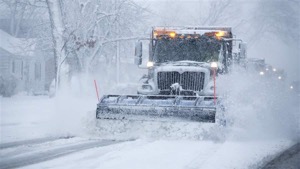 Pew Charitable Trusts Reviews State Snowfighting Efforts
Pew Charitable Trusts Reviews State Snowfighting Efforts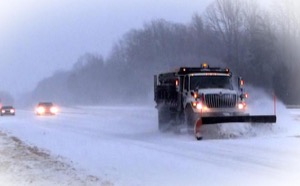 Michigan Tests GPS Plow Trackers
Michigan Tests GPS Plow Trackers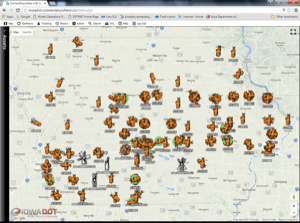 Iowa Upgrades GPS/AVL System
Iowa Upgrades GPS/AVL System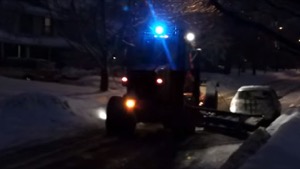 Agencies Consider New Plow Light Colors
Agencies Consider New Plow Light Colors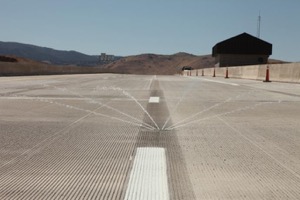 Nevada Installs Automated Deicer Sprayer
Nevada Installs Automated Deicer Sprayer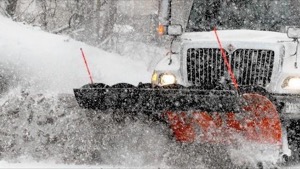 Illinois Village Creates Plow Ride-Along Program
Illinois Village Creates Plow Ride-Along Program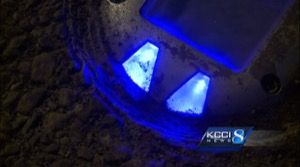 Iowa Tests Slick Road Sensor
Iowa Tests Slick Road Sensor Roadway Salt Best Management Practices
Roadway Salt Best Management Practices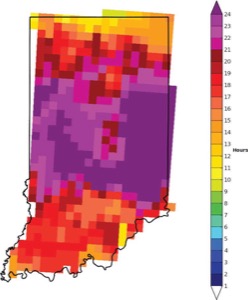 Road Weather Severity Based on Environmental Energy
Road Weather Severity Based on Environmental Energy Automatically Measuring Traffic Recovery Times After Snowstorms
Automatically Measuring Traffic Recovery Times After Snowstorms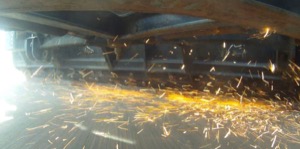 Performance Evaluation of Snow and Ice Plows
Performance Evaluation of Snow and Ice Plows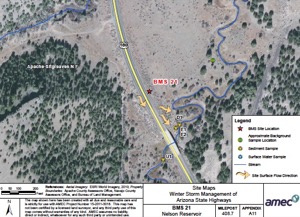 Development of ADOT Application Rate Guidelines for Winter Storm Management of Chemical Additives through an Ambient Monitoring System
Development of ADOT Application Rate Guidelines for Winter Storm Management of Chemical Additives through an Ambient Monitoring System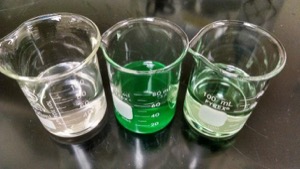 Effective Use and Application of Winter Roadway Maintenance Materials Enhancers
Effective Use and Application of Winter Roadway Maintenance Materials Enhancers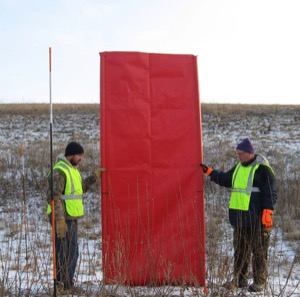 Assessing the Use of Shrub-Willows for Living Snow Fences in Minnesota
Assessing the Use of Shrub-Willows for Living Snow Fences in Minnesota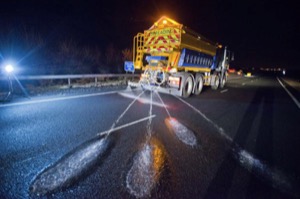 Trials of the Longevity of Brine and Pre-Wetted Salt on Typical UK Road Surfacings
Trials of the Longevity of Brine and Pre-Wetted Salt on Typical UK Road Surfacings Winter Highway Maintenance Operations: Connecticut
Winter Highway Maintenance Operations: Connecticut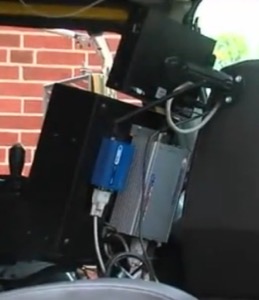 Pennsylvania DOT to Install AVL on Plows
Pennsylvania DOT to Install AVL on Plows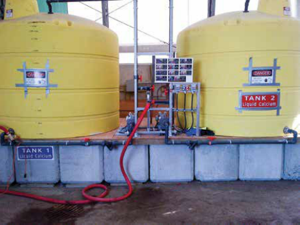 APWA Reporter Winter Maintenance Issue
APWA Reporter Winter Maintenance Issue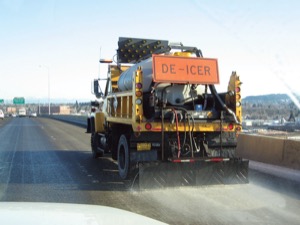 Roads & Bridges Winter Maintenance Supplement
Roads & Bridges Winter Maintenance Supplement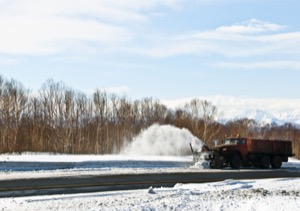 Spring-Loaded Plows Tested in New York
Spring-Loaded Plows Tested in New York Boston Plans Change after Historic Winter
Boston Plans Change after Historic Winter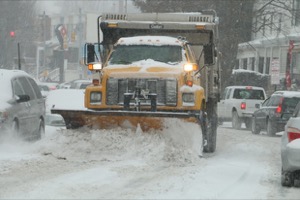 Missing Maryland Plow Blades Result in Upgraded Security
Missing Maryland Plow Blades Result in Upgraded Security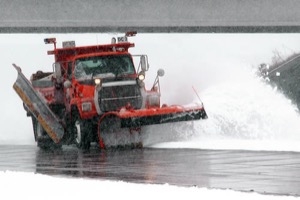 Estimation of Winter Snow Operation Performance Measures with Traffic-Flow Data, Phase 2
Estimation of Winter Snow Operation Performance Measures with Traffic-Flow Data, Phase 2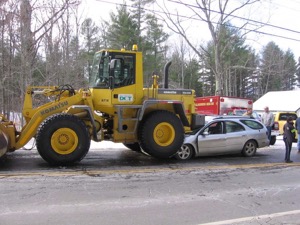 Investigation of the Performance of Backing Cameras on NHDOT Maintenance Vehicles
Investigation of the Performance of Backing Cameras on NHDOT Maintenance Vehicles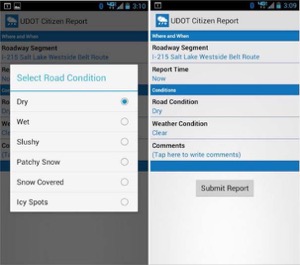 Citizen Reporting of Current Road Conditions
Citizen Reporting of Current Road Conditions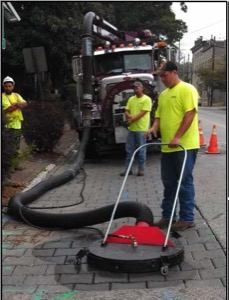 Permeable Pavements in Cold Climates: State of the Art and Cold Climate Case Studies
Permeable Pavements in Cold Climates: State of the Art and Cold Climate Case Studies Quantifying the Impact New Capital Projects Will Have on Roadway Snow and Ice Control Operations
Quantifying the Impact New Capital Projects Will Have on Roadway Snow and Ice Control Operations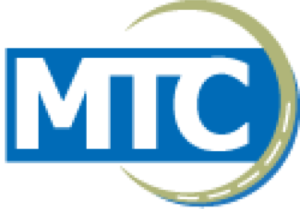 Improving Traffic Safety through Better Snow Fences: Image-Based Methods to Measure Trapped Snow Volume and the Snow Relocation Coefficient
Improving Traffic Safety through Better Snow Fences: Image-Based Methods to Measure Trapped Snow Volume and the Snow Relocation Coefficient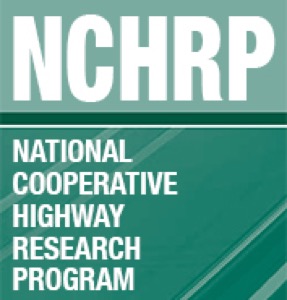 Guidelines to Incorporate the Costs and Benefits of Adaptation Measures in Preparation for Extreme Weather Events and Climate Change
Guidelines to Incorporate the Costs and Benefits of Adaptation Measures in Preparation for Extreme Weather Events and Climate Change National Winter Maintenance Peer Exchange
National Winter Maintenance Peer Exchange International Conference and Workshop on Winter Maintenance and Surface Transportation Weather
International Conference and Workshop on Winter Maintenance and Surface Transportation Weather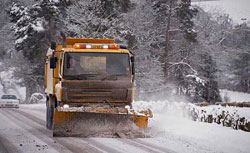 Three Cities Win APWA Excellence in Snow and Ice Control Award
Three Cities Win APWA Excellence in Snow and Ice Control Award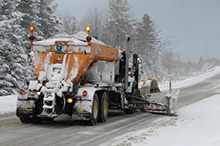 Ontario Develops New Winter Maintenance Plan
Ontario Develops New Winter Maintenance Plan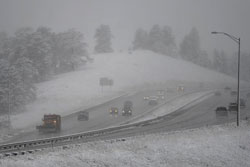 Colorado’s I-70 Maintenance Improves Performance
Colorado’s I-70 Maintenance Improves Performance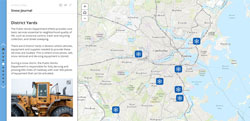 Boston’s Snow Journal Wins GIS Award
Boston’s Snow Journal Wins GIS Award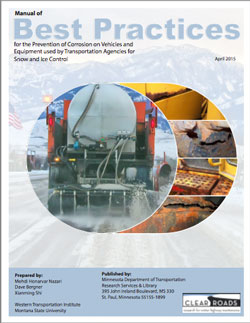 Best Practices for the Prevention of Corrosion to DOT Equipment: A User’s Manual
Best Practices for the Prevention of Corrosion to DOT Equipment: A User’s Manual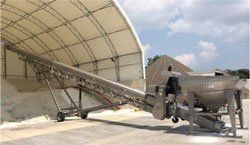 Optimization of Salt Storage for County Garage Facilities
Optimization of Salt Storage for County Garage Facilities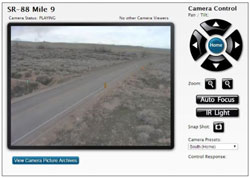 Effect of Video Camera-Based Remote Roadway Condition Monitoring on Snow Removal-Related Maintenance Operations
Effect of Video Camera-Based Remote Roadway Condition Monitoring on Snow Removal-Related Maintenance Operations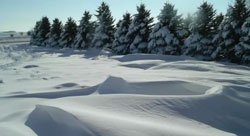 Web-Based Preventative Blowing and Drifting Snow Control Calculator Decision Tool
Web-Based Preventative Blowing and Drifting Snow Control Calculator Decision Tool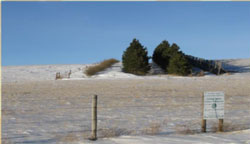 Assessment and Placement of Living Snow Fences to Reduce Highway Maintenance Costs and Improve Safety
Assessment and Placement of Living Snow Fences to Reduce Highway Maintenance Costs and Improve Safety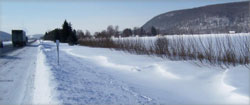 Designing, Developing and Implementing a Living Snow Fence Program for New York State
Designing, Developing and Implementing a Living Snow Fence Program for New York State Extending the Life of Paint and Reflective Markers by Using Partial Rubber Plow Blades
Extending the Life of Paint and Reflective Markers by Using Partial Rubber Plow Blades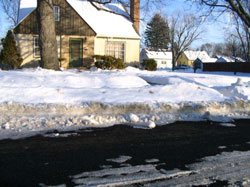 Permeable Pavements in Cold Climates: State of the Art and Cold Climate Case Studies
Permeable Pavements in Cold Climates: State of the Art and Cold Climate Case Studies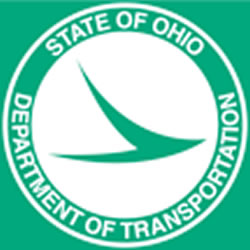 Assessment of Salt Procurement and Distribution Processes
Assessment of Salt Procurement and Distribution Processes Self-Heated Pavements
Self-Heated Pavements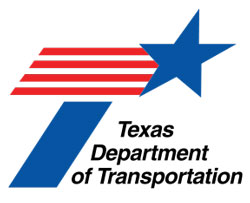 Use of Geothermal Energy for De-icing Approach Pavement Slabs and Bridge Decks
Use of Geothermal Energy for De-icing Approach Pavement Slabs and Bridge Decks AASHTO Subcommittee on Maintenance Annual Meeting
AASHTO Subcommittee on Maintenance Annual Meeting
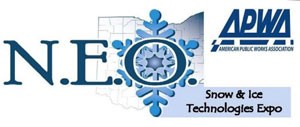 Northeast Ohio Snow & Ice Technologies 2015 State Expo
Northeast Ohio Snow & Ice Technologies 2015 State Expo
 Alaska Snow Symposium
Alaska Snow Symposium
 2015 APWA International Public Works Congress & Exposition
2015 APWA International Public Works Congress & Exposition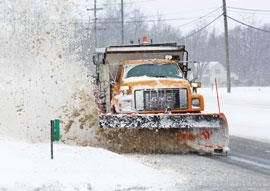 Shed Tackling: VTrans Looks at Issue Dealing with Salt Locations
Shed Tackling: VTrans Looks at Issue Dealing with Salt Locations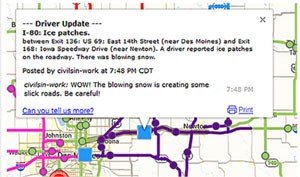 MnDOT Tests Crowdsourced Road Condition Reporting
MnDOT Tests Crowdsourced Road Condition Reporting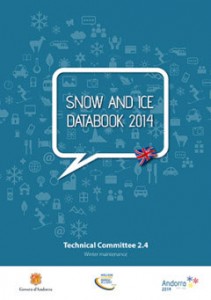 Snow and Ice Databook Available
Snow and Ice Databook Available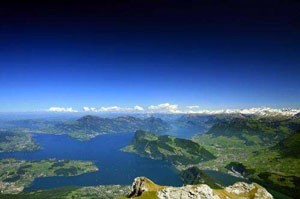 Salt Guideline Revisions Urged
Salt Guideline Revisions Urged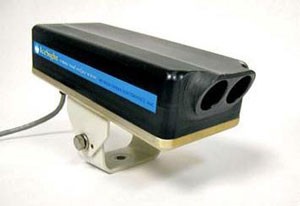 Mobile Road Condition Monitor Testing in Minnesota
Mobile Road Condition Monitor Testing in Minnesota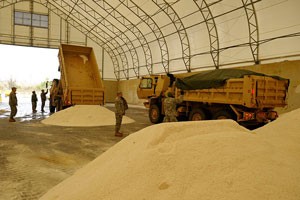 Ontario Good Roads Association Seeks Road Salt Claim Limits
Ontario Good Roads Association Seeks Road Salt Claim Limits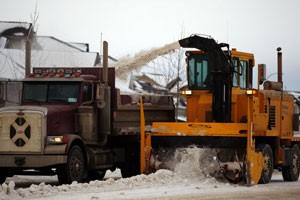 City’s Snow-Removal Program Gets Thumbs-Up
City’s Snow-Removal Program Gets Thumbs-Up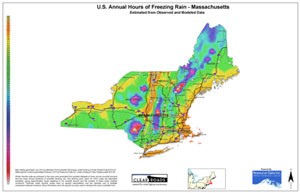 Winter Severity Mapping Enhancement
Winter Severity Mapping Enhancement Strategic Location of Satellite Salt Storage for Roadway Snow and Ice Control in Vermont
Strategic Location of Satellite Salt Storage for Roadway Snow and Ice Control in Vermont Development of Chloride Reduction Training
Development of Chloride Reduction Training Evaluation of the Viking-Cives TowPlow for Winter Maintenance
Evaluation of the Viking-Cives TowPlow for Winter Maintenance Fixed Automated Spray Technology: Current Practices and a Case Study
Fixed Automated Spray Technology: Current Practices and a Case Study Field Evaluation of Organic Materials for Winter Snow and Ice Control
Field Evaluation of Organic Materials for Winter Snow and Ice Control Effectiveness of Liquid Agricultural By-Products and Solid Complex Chlorides for Snow and Ice Control
Effectiveness of Liquid Agricultural By-Products and Solid Complex Chlorides for Snow and Ice Control Improved User Experience and Scientific Understanding of Anti-icing and Pre-wetting for Winter Maintenance in North America
Improved User Experience and Scientific Understanding of Anti-icing and Pre-wetting for Winter Maintenance in North America Pilot Study: Pavement Visual Condition and Friction as a Performance Measure for Winter Operations
Pilot Study: Pavement Visual Condition and Friction as a Performance Measure for Winter Operations Assessing the Use of Willow Shrub Species on Living Snow Fence Designs to Manage the Damaging Effects of Salt
Assessing the Use of Willow Shrub Species on Living Snow Fence Designs to Manage the Damaging Effects of Salt